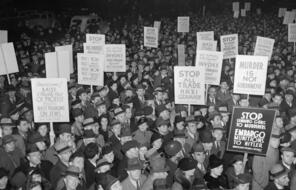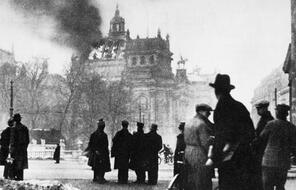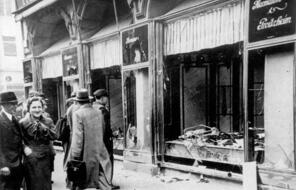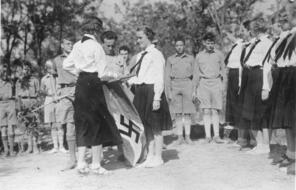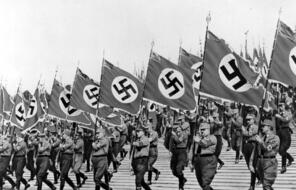Choiceless Choices
Nothing in the prisoners’ previous experience prepared them for the concentration camps and killing centers. Although some were luckier than others, no inmate had any control over his or her life.
Survivor and author Primo Levi wrote extensively about what life in the camps was like. He described the searing experiences of the Sonderkommandos, or “special detachments” (see reading, Auschwitz). These Jewish prisoners were kept alive and forced to help the German guards murder other prisoners.
The Sonderkommandos had several tasks: “to maintain order among the new arrivals (often completely unaware of the destiny awaiting them) who were to be sent into the gas chambers, to extract the corpses from the chambers, to pull gold teeth from jaws, to cut women's hair, to sort and classify clothes, shoes, and the contents of the luggage, to transport the bodies to the crematoria and oversee the operation of the ovens, to extract and eliminate the ashes. . . . " 1
The Sonderkommandos in Auschwitz had, at various times, from 700 to 1,000 active members. Despite their “special” jobs, they did not escape the fate of other prisoners. On the contrary, the SS took extra care to prevent any man who had been a Sonderkommando member from surviving and telling.
After the war, some people criticized the Sonderkommandos for their actions in the camps. But Levi concluded that people in the Sonderkommandos were not collaborators but victims. Although they exerted power over other prisoners, Sonderkommando members had no meaningful choices available to them.
Scholar Lawrence Langer argues that behavior in the camps “cannot be viewed through the same lens we used to view normal human behavior since the rules of law and morality and the choices available for human decisions were not permitted in these camps for extermination. As important as it is to point out situations of dignity and morality which reinforce our notions of normal behavior, it is all the more important here to try to convey the ‘unimaginable,’ where surviving in extremity meant an existence that had no relation to our system of time and space and where physical survival under these conditions resulted in ‘choiceless choices’!” 2
Connection Questions
- What is a “choiceless choice”? How does this concept add to your understanding of the experiences of victims and survivors of the Holocaust?
- How do Primo Levi and Lawrence Langer believe we should view the actions of the Sonderkommandos?
- How does Langer’s description of the universe of the camps compare to the one offered by Sonia Weitz in her poem “For Yom Ha’Shoah”?
- 1Primo Levi, The Drowned and the Saved (New York: Vintage International, 1989), 50.
- 2Lawrence L. Langer introduced the idea of “choiceless choice” into Holocaust discourse in an essay called “The Dilemma of Choice in the Deathcamps,” Centerpoint: A Journal of Interdisciplinary Studies 4, no. 1 (Fall 1980): 53–58.
Get the Handout
How to Cite This Reading
Facing History & Ourselves, “Choiceless Choices”, last updated August 2, 2016.

